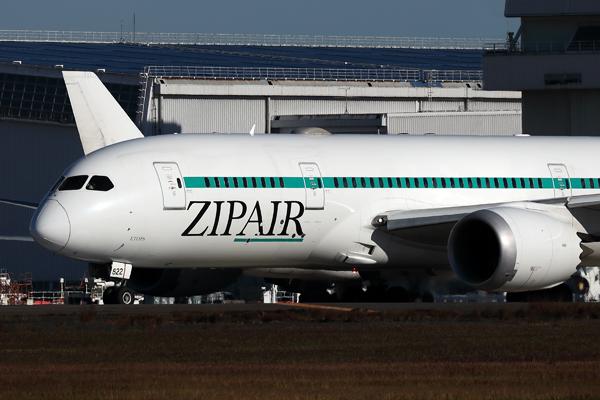
Zipair's long-term goal is to grow to a fleet of 20 aircraft by around 2030.
SINGAPORE—Japanese low-cost carrier (LCC) Zipair expects to receive more Boeing 787s in 2025 to continue its network growth, and it is also considering fleet options for its next expansion phase in 2026 and beyond.
Zipair, which is a subsidiary of Japan Airlines Group, recently received its eighth 787-8, says Yasuhiro Fukada, Zipair’s chief operating officer and co-founder. Two more are due to arrive in 2025 to boost the fleet to 10 aircraft by the end of next year, Fukada tells Aviation Week on the sidelines of the Singapore Airshow.
Among the carrier’s current total of eight aircraft, six were transferred from JAL and two were new deliveries. The next two will also be new deliveries, Fukada adds.
Zipair was launched in 2020 and its growth is on track with its initial plan, Fukada says. The carrier will discuss its fleet needs after 2026 with the JAL executives in charge of group procurement.
While there are advantages to maintaining an all-787 fleet, Zipair will consider other aircraft types, Fukada says. It may also look at the -9 variant of the 787. The long-term goal is to grow to a fleet of 20 aircraft by around 2030.
Zipair currently configures its 787s with 290 seats, including 18 lie-flat seats. The next two aircraft will also be in this configuration. However, Zipair will study whether to increase the number of lie-flat seats in future deliveries to take advantage of very strong demand for this product, Fukada adds.
The carrier’s network is primarily focused on Southeast Asia and the U.S. It plans to add a flight to Vancouver from its hub at Tokyo’s Narita International Airport in March. It is unlikely to add other new destinations in 2024, Fukada says.
The arrival of the next two 787s will allow more destinations to be introduced in 2025. These locations would likely be within Southeast Asia, to markets such as Vietnam or Malaysia, and on the West Coast of North America. Beyond 2025, Zipair will consider U.S. destinations further east, particularly New York, he adds.
While some industry observers are skeptical about the financial viability of the long-haul, low-cost business model, Fukada says there are a lot of benefits to this approach. For example, it is easier to maintain high utilization rates on long-haul routes versus short-haul LCCs.
Zipair is targeting the “generation Z” market, Fukada says. About 75% of its customers are younger than 40 years old.
More than 60% of the airline’s passengers are non-Japanese. This reflects the fact that inbound travel to Japan has recovered far more quickly than outbound leisure travel.





